Honorable Discharges – 177th Pennsylvania Infantry, Company I – Part 6
Posted By Norman Gasbarro on December 2, 2011
Today, the blog post again continues to feature members of the 177th Pennsylvania Infantry, Company I, who served the full term of nine months and received honorable discharges on 5 August 1863. The research results presented here are based on preliminary data gathering on each of the members of the company and searches for Pension Index Cards that reference the pension application files that are available at the National Archives in Washington, D.C. Some of the members of this company has been previously discussed on blog posts here and reference to those posts are provided with links.
In addition, much has already been written on Benjamin J. Evitts, the elected captain of this company (click here for previous posts on Benjamin J. Evitts). Click here for previous posts on the 177th Pennsylvania Infantry.
The 177th Pennsylvania Infantry, Company I,was a drafted militia that served for nine months. No member of this militia was reported injured as a result of a military act, so, theoretically, nearly all the pension applications should be post-1890, when “age” became the most significant factor for the veteran to receive a pension. This should be reflected in the date of application on the Pension Index Card. If the veteran died before 1890, there probably was no application made by the veteran, but it is possible that a widow applied. In the column for “Certificate Number,” if no number appears, this would indicate that an application was made, but no pension was awarded. If a number appears in the “Certificate Number” column, it can be assumed that a pension was awarded, although the date of the award cannot be determined from the Pension Index Card.
————————————
WILLIAM HENRY KOCHER (1844-1913)
William Henry Kocher was born in Pennsylvania in 1844 and was possibly living in Mifflin Township, Dauphin County in 1850 in the household of Lydia Shade and Nathan Laudenslager, she a farmer and he a laborer. At this writing, nothing is known of William’s parentage. After being drafted and serving in the 177th Pennsylvania Infantry, William returned to the Lykens Valley area to briefly work as a laborer in the mines, but then re-enlisted as a Private in the 210th Pennsylvania Infantry, Company H, on 5 September 1864, and served until discharged on 30 May 1865. In this second service, his name appears as “William Koehner.” Around 1867 he married. He and his wife Henrietta had the following children (dates approximate): Elmer Kocher (1868); Mary Kocher (1869); Charles Kocher (1872);Catherine “Kate” Kocher (1874); Annie Kocher (1877); Harvey Kocher (1880); Robert Kocher (1885); and Edward Kocher (1887). Census records indicate the family lived in Wiconisco and William and his sons worked in the mines as laborers. In 1910, William and Henrietta were living in Lykens Borough and he was collecting an invalid pension. After William’s death in 1913, he was interred in Union Cemetery, Lykens. Henrietta survived him and collected a widow’s pension.
——————————
HENRY S. “HARRY” KOPPENHAVER (1844-1911)
Henry S. “Harry” Koppenhaver was born about 1843 in Pennsylvania. At this time, the names of his parents are not known. He is also found in the records as Koffenhauer, Koppenhoffer, Koppenheffer, and Coppenhaver, with other variations also possible. The Civil War service of Henry Koppenhaver was limited to the 177th Pennsylvania Infantry. No record of draft registration has been located for him. Censuses well after the Civil War note that a Henry Koppenhaver lived in Jackson Township, Northumberland County, in 1890. Later, in 1900, he is living in Sunbury with a wife named Esther, and three children (birth years approximate): Florence S. Koppenhaver (1872); Catherine “Kate” Koppenhaver (1874); and Charles H. Koppenhaver (1880). However, Esther was not the mother of the children as she married Henry about 1888 (her first marriage and Henry’s third marriage) and she did not indicate to the 1910 census that she was the mother of any children. At this time, it is not know who Henry’s first and second wife were or what happened to them. Henry was a blacksmith. He died in 1911 and is buried in Pomfret Manor Cemetery, Sunbury, Northumberland County. At some point during his lifetime, Henry began collecting an invalid pension based on his Civil War service, and after his death, his third wife, Esther, continued to collect as his widow.
—————————
GEORGE LUBOLD (1837-1918)
George Lubold was born in Schuylkill County, Pennsylvania in 1837, the son of John Lubold (1811-1879) and Catharine [Sassaman] Lubold (1822-?). During the Civil War, he served in the drafted militia, the 177th Pennsylvania Infantry, and after his drafted service, he enlisted in the 7th Pennsylvania Cavalry, 19 February 1864, where he served until he was wounded in the left leg by his own rifle, which discharged while he was cleaning it. Pension records indicate that after the accident which occurred at Duck River, Tennessee in late September 1864, he was moved to a hospital in Nashville, Tennessee, then to Louisville, Kentucky. Eventually he was discharged by General Order of 15 July 1865. Pension records also indicate that at some point he was also wounded in the abdomen. George suffered with disability until 1903, when a surgeon in Ashland, Schuylkill County, was compelled to amputate his left leg because of a sarcoma which developed in the wound area. The extensive file available to the Civil War Research Project contains a full explanation of the wound and how his comrades carried him to a house for care and the full treatment available to him at the hospital. No Pension Index Card has been located for George Lubold, but it is clear from the document shown above that he did receive a pension and that his certificate number was 209569 (click on document to enlarge). During the Civil War, George Lubold married Christina Miller. They had one known child, Charles H. Lubold, born about 1867, and there may have been others.. George did odd jobs. In 1880, he was working as a wood chopper in Shamokin, Northumberland County, but for most of the time after the war, he lived in Gratz or Lykens Township. By1900, he was relying on his disability pension for support. Christina died about 1914 and George died of chronic gastritis in 1918. He is buried in Zion (Klinger’s) Church Cemetery, Erdman, Lykens Township.
—————————–
WILLIAM HENRY REEDY (1829-1881)
William Henry Reedy was featured in the blog post, Gratz During the Civil War – Leonard Reedy House. He was the twin brother of Henry William Reedy and the son of Leonard Reedy, gunsmith of Gratz, Pennsylvania. William Henry Reedy married Matilda Funk (1832-?) and with her had several children (birth years approximate), including Annie Reedy (1858-?); Mary “May” Reedy (1861-?); John L. Reedy (1866-?); Sarah E. Reedy (1869-?); Franklin “Frankie” Reedy (1872-?); Robert Reedy (1872-?); and Charles Reedy (1880-?). William Henry Reedy was a carpenter and laborer and lived most of his adult life in Schuylkill County. He is buried at St. Peter’s Cemetery in Orwin. After his death, Matilda applied for a widow’s pension, which she apparently received. There is no record that William Reedy ever applied for or received a pension.
—————————–
The continuation of the “Honorable Discharges” of the 177th Pennsylvania Infantry, Company I, will appear in early December 2011.
 ;
;
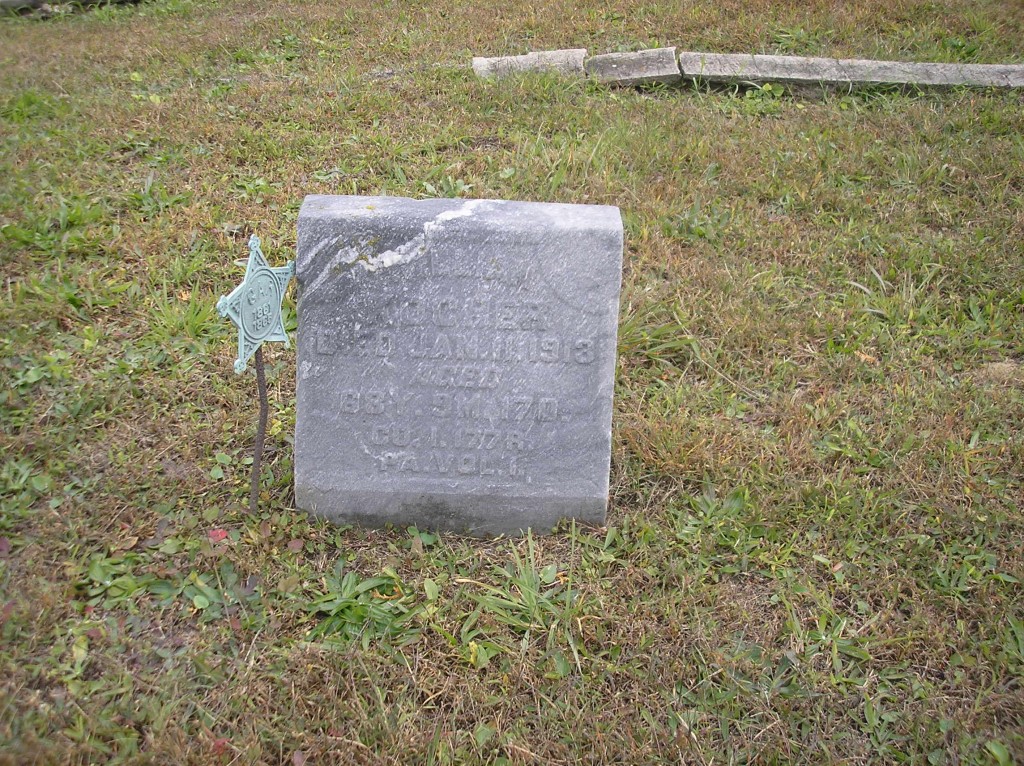
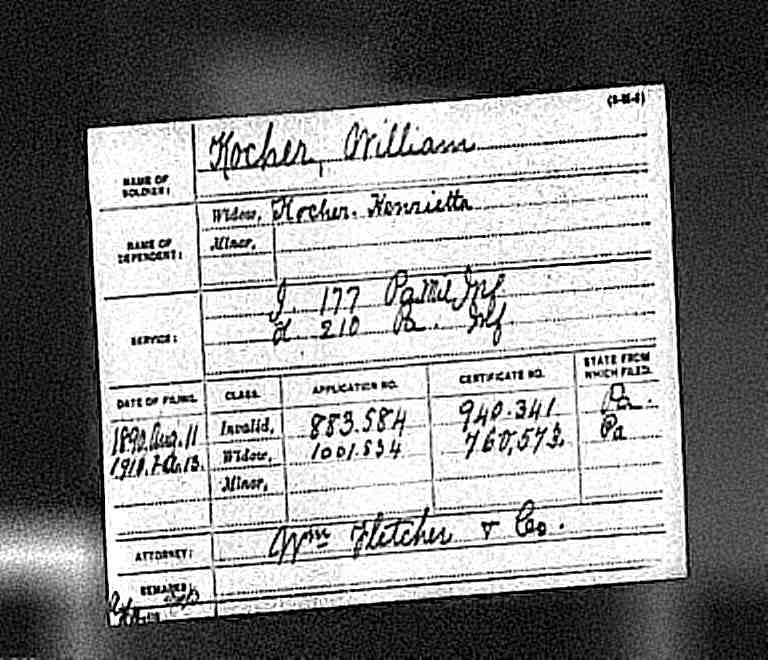
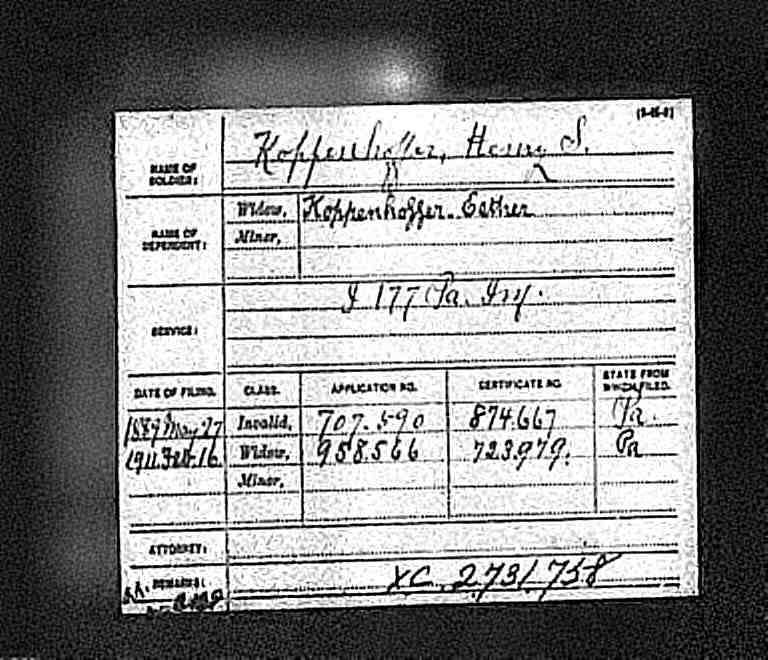
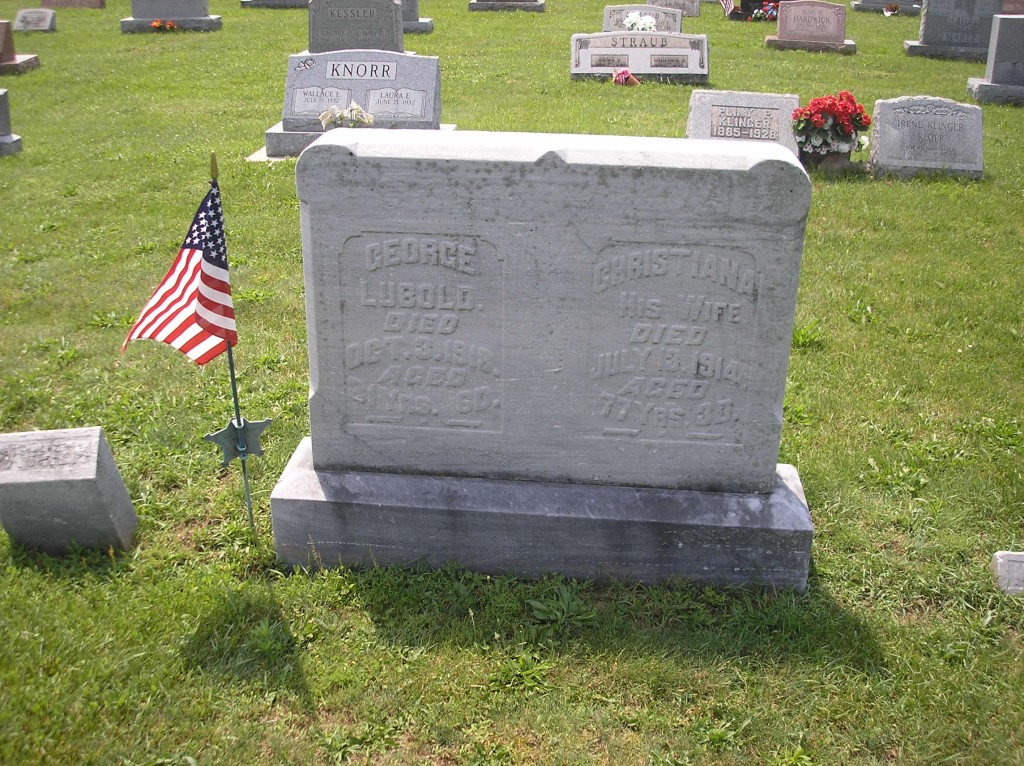
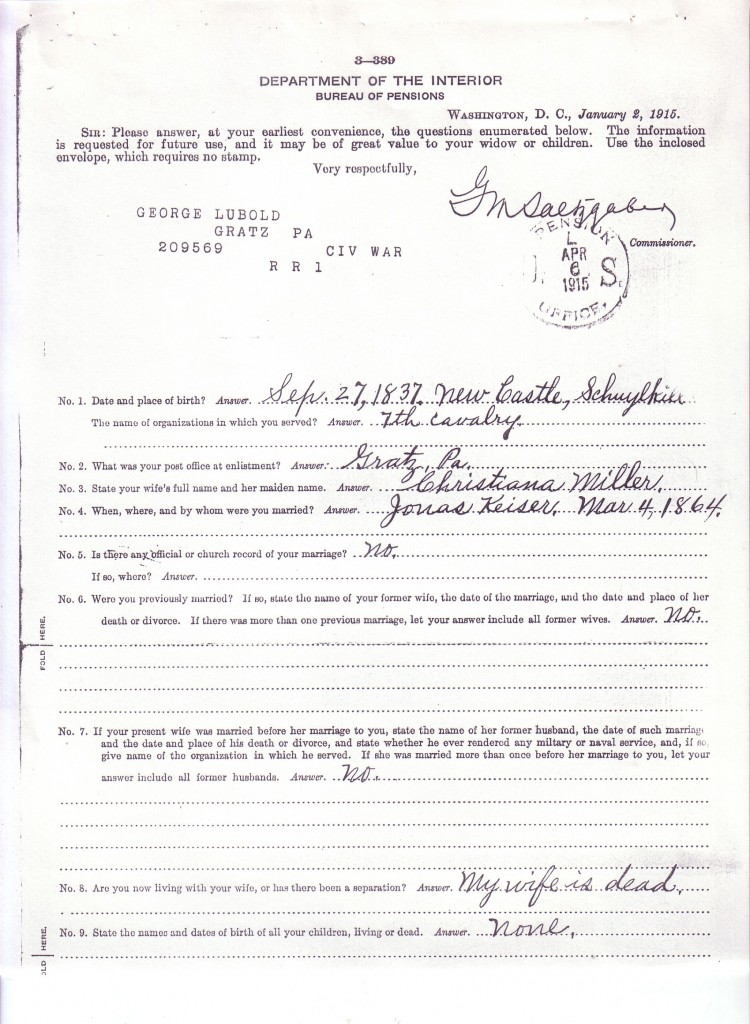



Comments